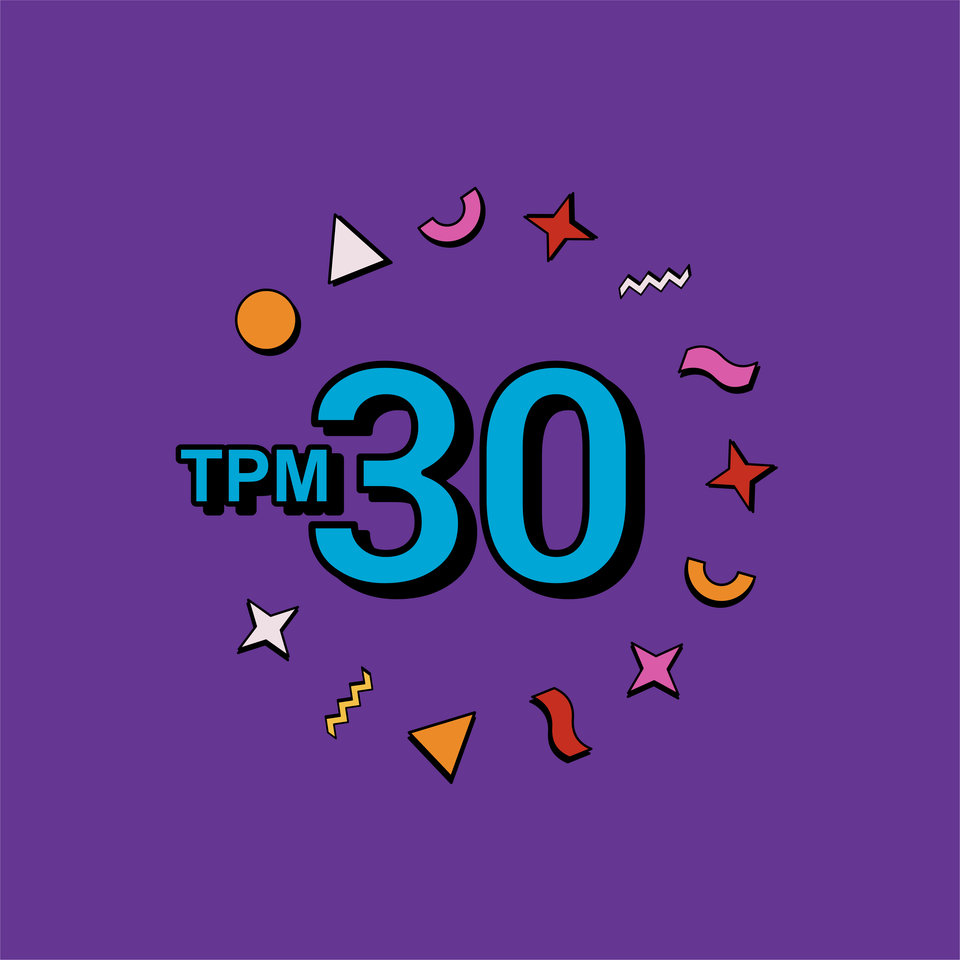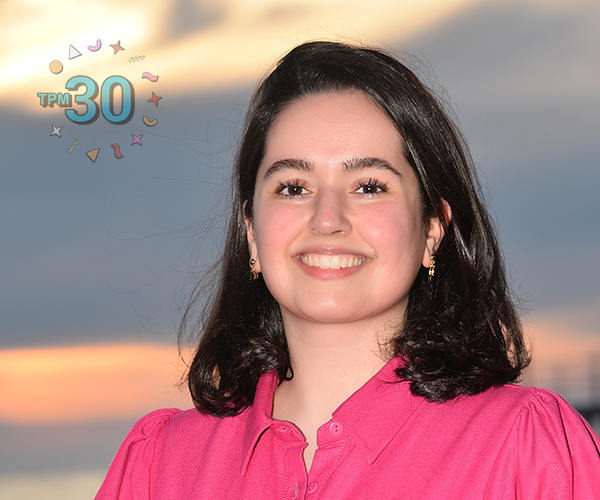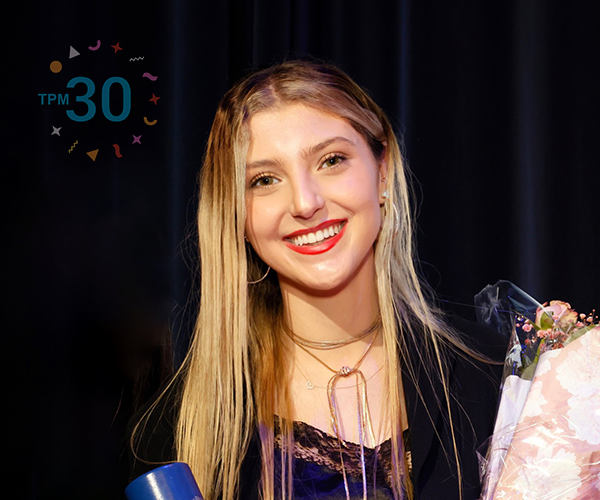TPM Portraits: Nitesh Bharosa
Nitesh Bharosa studied the bachelor programme TB at TPM more than twenty years ago. Nowadays he is professor in GovTech at the faculty. The multidisciplinary character of TPM has shaped and enriched Bharosa enormously over the years. As a professor, he strives to be a role model himself for the new generation of students.
At the end of 2001, Nitesh Bharosa came to Delft from Suriname to study Computer Science. He was interested in computers and programming and had heard good things about the TU. But things didn’t quite go to plan. Because his study visa was delayed, he missed all the entry modules. Bharosa: “They were the entry requirements for the subsequent modules. So I had a problem.”
Bharosa decided to look elsewhere on the campus and went into the TPM building. “I read in the brochure for TB that you could choose to specialise in Information & Communication Technology. That appealed to me. And with TB, I was able to start halfway through the year. So it was by chance that I ended up at TPM. A faculty I had never even heard of before.”
Studying for a degree and PhD at TPM
Bharosa very quickly found that TB was the perfect choice for him. “I really enjoy analysing technical systems and then improving them. I have an engineering mind-set and was thrilled with the methods and techniques that the first-year SEPAM modules offered.”
The biggest revelation for Bharosa came in the second year: the actor analysis. “To be able to really understand and improve technical systems, you first have to observe the multi-actor arena from a socio-technical perspective. Within the playing field of all kinds of parties, interests, policies, values, laws and rules, you ultimately have to find acceptable solutions. There are not many educational programs that teach you this socio-technical approach.”
After getting his degree in 2006, Bharosa started studying for a PhD in Delft in improving communication between emergency services in the event of a disaster. “Things often go wrong, particularly when it comes to sharing information. One of the reasons for this is that the emergency services use different communication systems. In the case of 9/11, many of the victims were firefighters, something that could have been prevented.”
Fire at the Faculty of Architecture and the Built Environment
During his research, Bharosa ended up in the middle of an emergency situation himself when fire broke out in the Faculty of Architecture and the Built Environment building. “It so happened that I had P2000 open on my laptop. All messages from emergency services are received through this system. I suddenly saw all kinds of messages regarding the fire in Delft. When I was at the scene, I only saw some smoke coming from the Faculty of Architecture and the Built Environment building. While there were no emergency services at the location yet, I still thought: oh, they will get this under control.”
The opposite was true: the building was completely destroyed by the fire. Bharosa: “I kept waiting and waiting, but nothing happened. It turned out that due to roadworks, there was only one route via which the emergency services could get to the campus. And when they eventually got there, they couldn’t find where the fire was, again leading to delay. Afterwards, it turned out that a lot had gone wrong in the sharing of information. For me, that underlined the importance of my research. A number of recommendations from my dissertation was also followed by the emergency services later on.”
Communication between the government and citizens
Although Bharosa was given the opportunity to work on a post-doc at TPM after obtaining his PhD, he chose to leave Delft. “I wanted to gain more practical experience and so I went to work for a start-up as an R&D consultant. At the same time, TPM gave me the freedom to continue contributing to education and research. So I always stayed connected to the faculty.”
Bharosa shifted his focus from communication between emergency services to communication between the government and society. A line on which there is at least as much noise. “That is not only because citizens get lost among the enormous number of websites but also because a lot goes wrong within government agencies themselves. Think of the inability to compensate people in Groningen or the child care benefits scandal.”
In the search for solutions to challenges relating to the sharing of information, governments are increasingly looking at emerging digital technologies, such as AI and digital twins. Bharosa: “Applications of these technologies in the public sector are also referred to as GovTech. More and more components of GovTech are being designed and operated by commercial parties.”
Setting up the Digicampus
The responsible design and governance of GovTech solutions is one of the major challenges of our time, says Bharosa. Governments have a huge impact on society, and by extension, the technologies they use also have a great impact. In the future, more of these technologies will be designed and operated by private parties. “How can we maximise the potential and minimise risks? And how can we include people in the design process rather than just designing for them? In order to find out, I – along with a couple of public parties – set up the Digicampus in 2019. It is a place where government bodies, businesses, academics and citizens can work together on designing the next generation of public services.”
The activities carried out at the Digicampus include design workshops and experiments. Bharosa: “We collaborate with stakeholders and test the possibilities and limitations of various GovTech solutions. Here numerous functional requirements and non-functional requirements come into play, including interoperability, compliance, scalability, and performance. However it is just as important to safeguard values such as privacy and transparency, in the design. The great thing is that as academics, we not only contribute knowledge but also pick up a lot of knowledge too.”
From student to professor
The Digicampus at TPM marks Bharosa’s definitive return to Delft. In 2021, he was appointed professor of GovTech and Innovation. “I would never have dreamt that I would get this role. As a student, I always looked up to academics. These are people who drive society forward through ground-breaking research, teaching and valorisation. Suddenly, I am one of them.”
According to Bharosa, the fact that he is a professor within the same faculty where he studied makes the whole thing even more enjoyable and special. “People I was taught by twenty years ago are now my colleagues. What also helps in my role is that I followed many TPM courses myself. As a result, I recognise the struggles that students have with content. If a student can’t figure something out, I can relate to the course material and think along with them.”
Role model for future generations
As a professor, Bharosa understands that he can act as a role model. “I once came to the Netherlands from a country far away, with a different skin colour and a surname that is not Dutch. I had to make a lot of effort to adapt to new ways and was sometimes confronted with prejudice and even discrimination. At the same time, I met many new people who gave me a warm welcome and always encouraged me to get the best out of myself and follow my dreams. I want to show that you can achieve a lot by doing that.”
For the past two years, Bharosa has also held the position of Diversity and Inclusion officer at TPM. According to him, there is still a lot to be done within the university when it comes to inclusivity. “I recently read an article in the Delta about a non-binary student who didn’t feel comfortable using either the men’s or the women’s toilets. In order to avoid having to use the toilets on the TU campus, this student hardly drank any water during the day. I found that shocking. That shows how important having some gender-neutral toilets are.”
Shaped by TPM
Since his return to Delft, Bharosa has noticed how much TPM shaped him. “Especially when it comes to collaborating with other disciplines. When I sit on committees in other faculties, I sometimes see that people think too much from the perspective of technology. That’s when I say: ‘OK, that sounds valid, but would it also work for the various users? And what are the consequences for society?’ If you look at that at an earlier stage, you end up with technology that is much more promising and responsible.”
According to Bharosa, there are also growing opportunities for TPM to collaborate with public organisations, citizen groups, and companies, when it comes to major social transitions, for example the digital transition. “An example of this is Digicampus, a quadruple helix innovation hub focusing on co-creating human centric GovTech. Setting up this type of mission-driven collaboration is challenging and requires a long-term perspective. But once started, you have a lab where you can design, experiment and learn together. Which ultimately everyone benefits from.”
TPM Portraits
In the "TPM Portraits" series, we speak to TPM members right across the faculty. In celebration of TPM's 30th anniversary we have had personal conversations with people who are ( or have been) all part of the TPM community in their own way. What have they experienced within the faculty? What is TPM to them today? And how do they see the future? A new portrait appears every two weeks.





